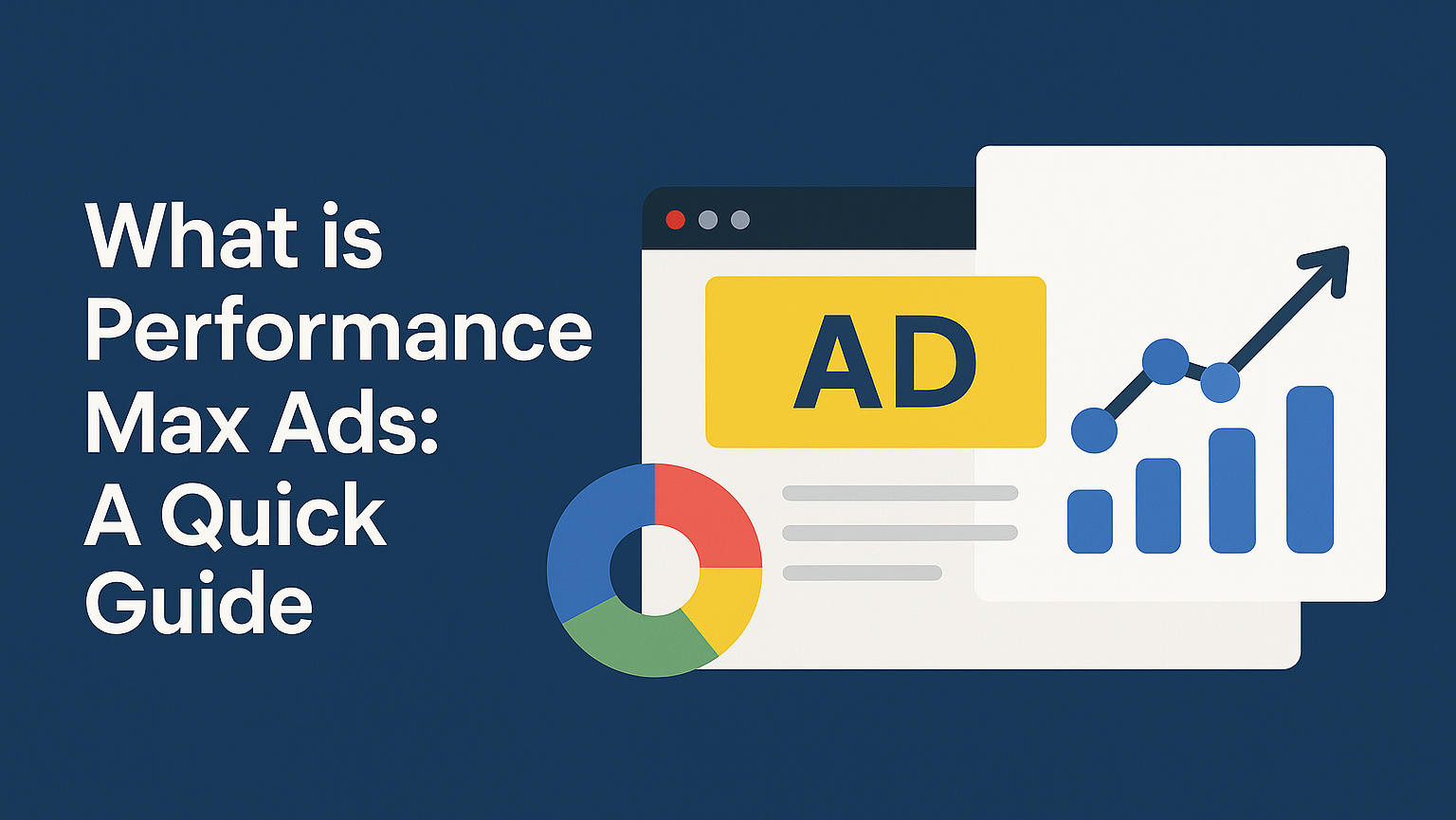
What is Performance Max Ads: A Quick Guide
What is Performance Max Ads: A Quick Guide
Google has always been on the frontline of digital advertising technology, and in recent years, it has introduced tools designed to streamline ad strategies for businesses of every size. One of its biggest advancements, reflecting a major shift in the way campaigns can be run, is the Performance Max campaign type. Since its initial rollout, Performance Max has continued to mature, adapting to advertiser needs and the fast-changing online landscape. As we settle into 2025, understanding what Performance Max campaigns actually are and how they function is vital for any marketer or business leader invested in online growth.
Whether you’re overseeing massive budgets for a national brand or running digital campaigns for your small business, you’ve probably heard talk about Performance Max across your professional circles. This isn’t just the next iteration of “smart” campaigns; Google is pitching Performance Max as the foundation of its unified approach to advertising, where machine learning takes centre stage.
What is a Performance Max Campaign?
In short, Performance Max, often referred to as “PMax,” is a goal-based campaign type that uses Google’s automation across bidding, budget, audiences, creative, attribution, and more — all fed by machine learning models. Instead of creating separate campaigns for Search, Display, YouTube, Discover, Gmail, and Maps, you set up one Performance Max campaign. Google then allocates your ad spend dynamically, across all these channels, to maximise results based on your specific business objectives.
Where you previously had to micromanage targeting, placements, and creatives for each channel, Performance Max lets you hand over most of those levers to Google’s systems, focusing on strategic inputs like high-quality creative assets and key conversion goals.
How does Performance Max differ from traditional campaign types?
Traditionally, advertisers split their budgets and strategies across different campaign formats:
- Search for text ads on search engines
- Display for image banners across partner sites
- YouTube for video campaigns
- Gmail and Discover for native, inbox, or feed placements
- Maps for local targeting
With Performance Max, all these are bundled together, and machine intelligence decides, in real time, which combinations of creative, audience segment, and placement will work best to deliver conversions. This means less time spent on manual fiddling and more on broad strategic thinking.
A simple comparison can help make this clearer:
| Factor | Traditional Campaigns | Performance Max |
|---|---|---|
| Channel Selection | Manual | Automated/Dynamic |
| Asset Input | Channel specific | Asset groups for all |
| Targeting | Manual setups | Automated, data-driven |
| Optimisation | Per campaign/channel | Goal-focused AI |
| Reporting | Channel segmented | Unified, cross-channel |
The Evolution: Performance Max in 2025
Back in 2021, when Performance Max was first introduced, the pitch was clear: unify, automate and optimise. Marketers quickly found that results could be excellent, but transparency was sometimes lacking. Fast forward to today, and several advancements have emerged:
- More detailed insights: Improved transparency on where ads are appearing, which assets are working, and the audiences that are responding.
- Enhanced controls: More options for guiding automation, such as audience signals, negative keyword management, and device targeting tweaks.
- Creative flexibility: Broader support for different ad formats, shoppable media, and rich creative assets.
With growing pressure on marketers to maximise ROI and reduce complexity, there’s been a corresponding surge in demand for tools that “just work.” Performance Max campaigns, thanks to continued improvements in Google’s AI, have become the go-to for many digital professionals.
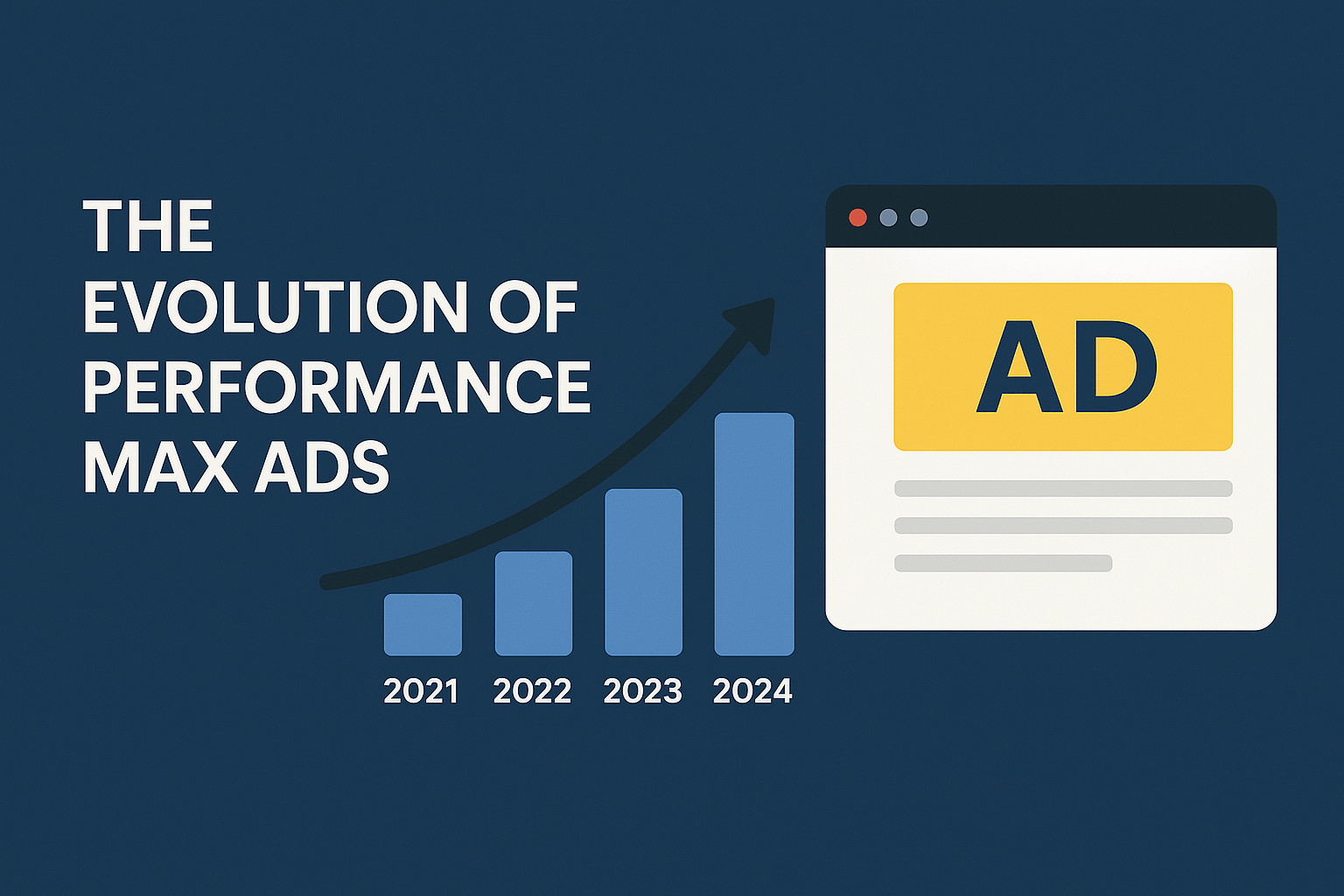
The Core Benefits
The concept of handing over so much control to automation may feel daunting at first glance, but the tangible gains can be significant.
Unified Reach Performance Max campaigns push your ads across every relevant Google network. You’re no longer limited by human capacity for micro-managing campaigns. Your ads surface wherever your audience is, whether that’s streaming a YouTube video, checking their emails, using Maps, Googling products, or reading articles on their favourite sites.
Goal-Focused Automation You tell Google what you want to achieve — online sales, lead generation, in-store visits, or even calls. The system works tirelessly to make those goals happen at the best possible return. This means less guesswork, and more measurable outcomes.
Smarter Creative Testing Performance Max lets you upload a variety of creatives: headlines, descriptions, images, logos, videos. The system automatically tests different combos, learning what works for different people and placements.
Better Use of Data Google’s AI isn’t just optimising for clicks. It considers your conversion tracking, imported offline data, past website behaviour, and audience signals to drive performance. And in 2025, better privacy-safe data handling ensures you’re not running afoul of the latest regulatory rules.
Time Savings With fewer campaigns to build, manage, and report on, your marketing team can spend more time developing better creative, analysing strategy, and innovating elsewhere.
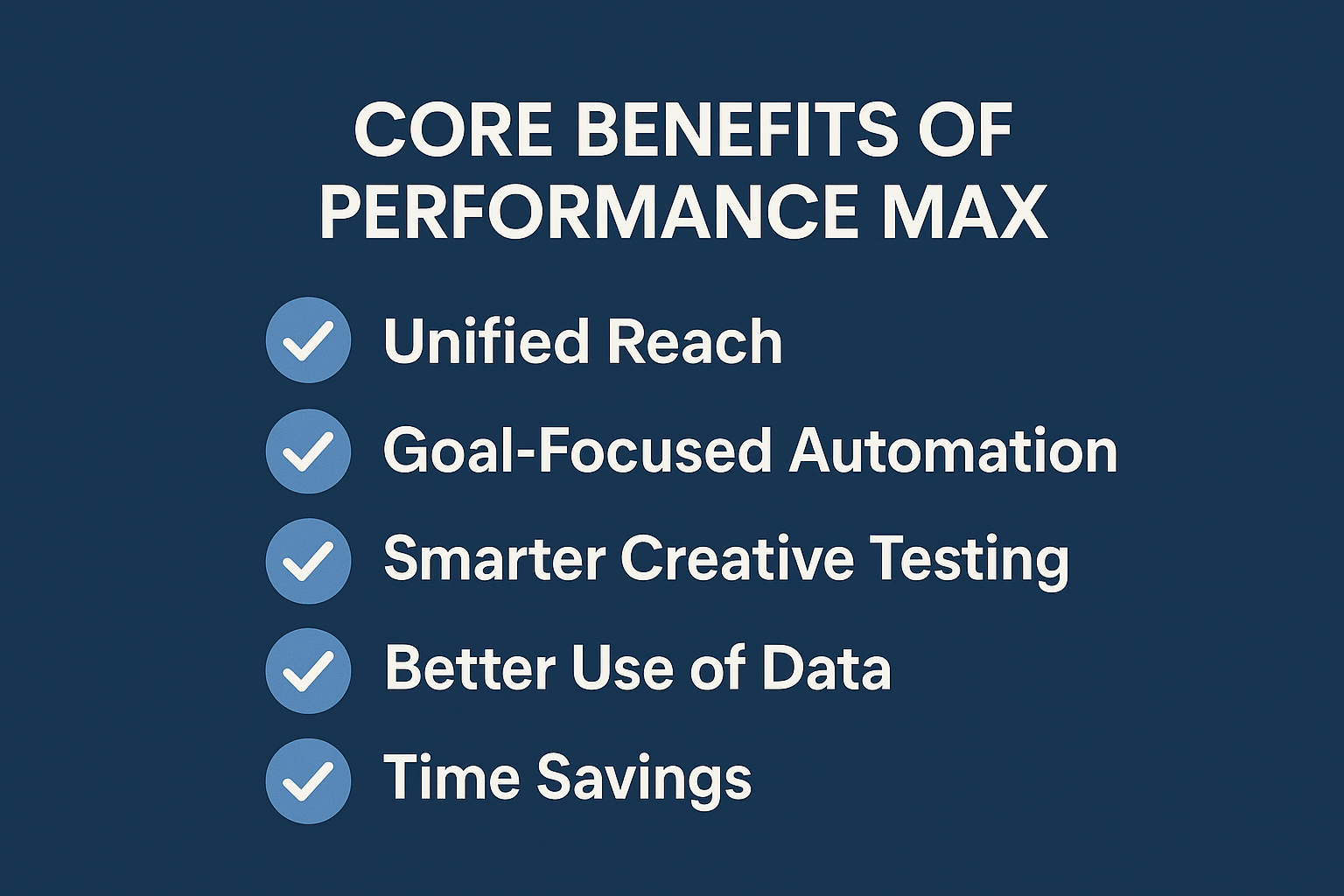
Getting Started with Performance Max
If you’re new to this campaign type, launching your first Performance Max campaign involves a few key steps:
- Define clear business goals: Set specific conversion actions — sales, sign-ups, form fills, store visits — that Performance Max will aim to optimise.
- Build strong creative asset groups: Assemble high-quality images, videos, headlines, and descriptions. Diverse assets fuel Google’s testing and learning process.
- Upload audience signals: While Google will automatically find new audiences, providing your own signals (like customer lists or website visitors) accelerates performance.
- Set budgets and bidding strategies: Choose your preferred daily or monthly budgets, and which bidding method (e.g., Maximise Conversions, Target CPA or ROAS) aligns best with your business objectives.
- Monitor and refine: Use the new insight tools to see which assets are top performers and make data-driven updates as you go.
Advanced Audience Strategies for Performance Max
Unlocking the Power of Audience Signals
Performance Max campaigns thrive on the quality and relevance of the audience signals you provide. While Google’s automation will seek out new prospects, supplying robust first-party data and custom segments can dramatically accelerate learning and improve targeting precision.
Building and Uploading Audience Lists
Start by gathering your most valuable first-party data—customer emails, phone numbers, and website visitor lists. Use Google’s Customer Match to upload these securely into your Google Ads account. This allows Performance Max to prioritise users who are already familiar with your brand or who closely resemble your best customers.
Steps to implement:
- Navigate to the Audience Manager in Google Ads.
- Select “Create Audience List” and choose the type (Customer List, Website Visitors, App Users, etc.).
- Upload your data following Google’s formatting guidelines.
- Assign these lists as audience signals when setting up or editing your Performance Max campaign.
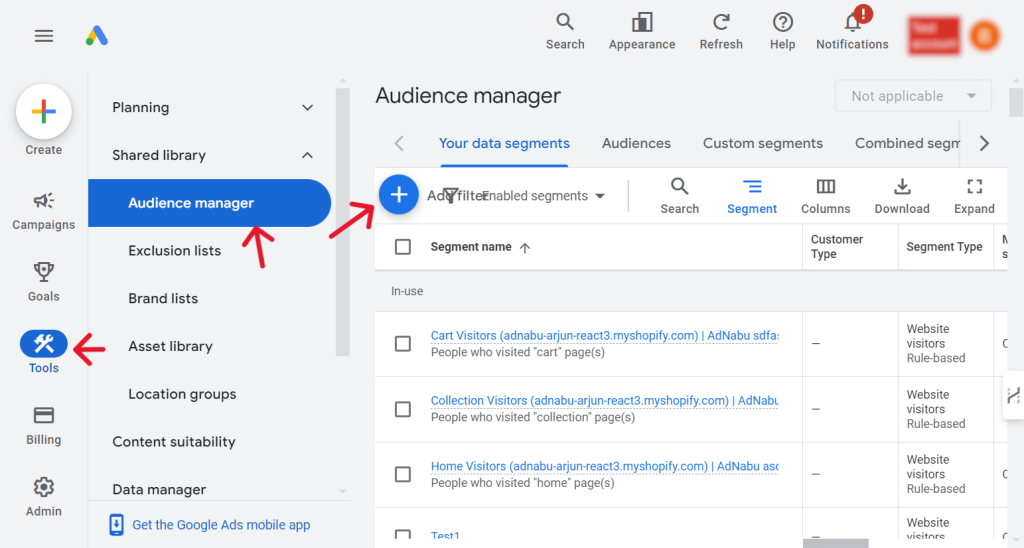
Leveraging Custom Segments
Custom segments let you define audiences based on interests, search behaviours, or site interactions. For example, you can target users who have searched for specific keywords, visited competitor websites, or shown interest in relevant topics.
How to create custom segments:
- In Audience Manager, select “Custom Segments.”
- Define your segment by entering relevant keywords, URLs, or app names.
- Add these segments as audience signals in your campaign setup.
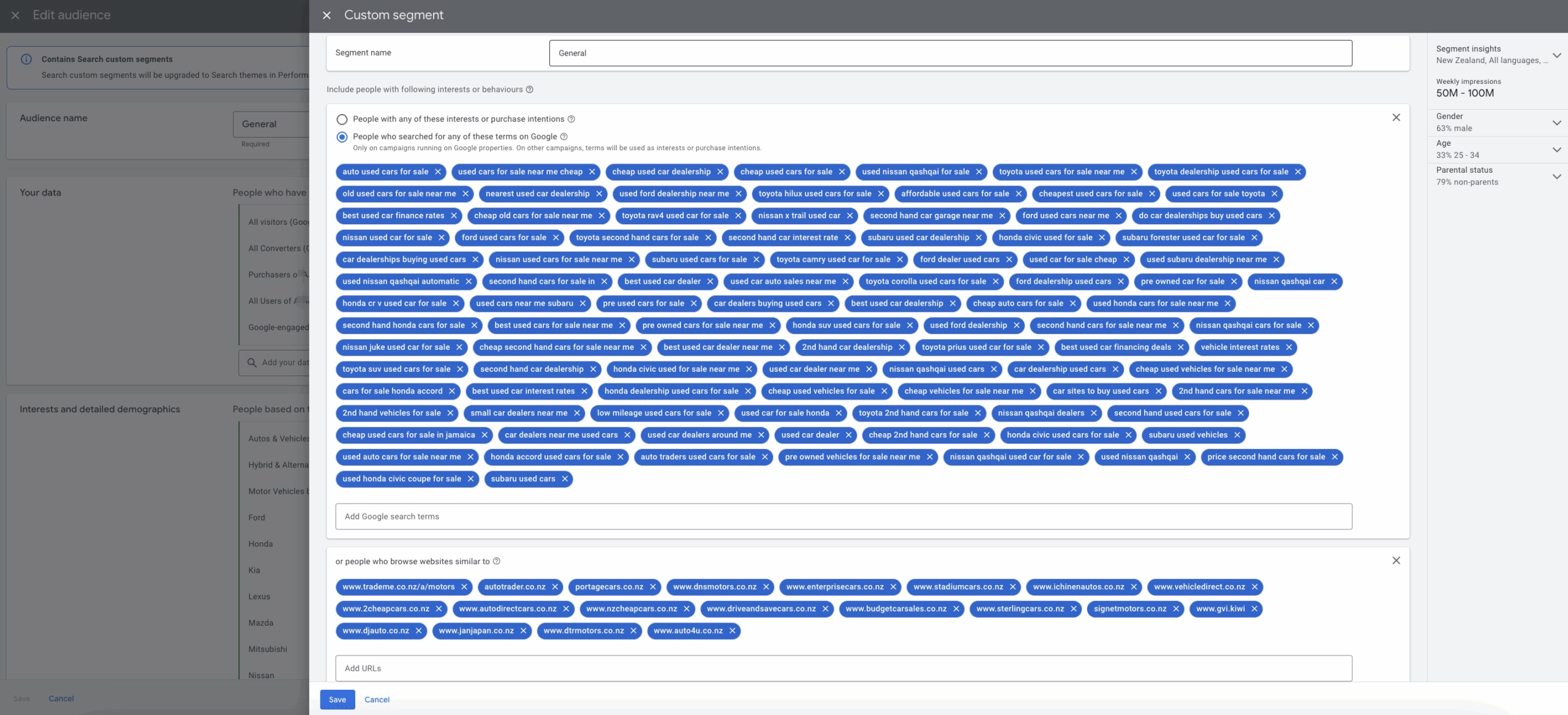
Interpreting Audience Insights
Once your campaign is running, use the Audience Insights report to see which segments are driving the most conversions. Look for patterns—such as high-performing customer lists or interest groups—and refine your audience signals accordingly. Regularly update your lists and segments to keep targeting fresh and relevant.
Creative Asset Best Practices & Examples
Crafting High-Performing Creative Assets
The success of Performance Max campaigns hinges on the quality and diversity of your creative assets. Google’s automation tests countless combinations of headlines, descriptions, images, and videos—so providing a rich library of assets is essential for maximising reach and engagement.
Image and Video Specifications
- Images: Use a mix of landscape (120×628 px), square (120×120 px), and portrait (960×120 px) formats. Ensure images are high-resolution, uncluttered, and brand-aligned.
- Videos: Upload at least one video (10–30 seconds) in landscape (16:9), square (1:1), and vertical (9:16) formats. Keep messaging clear and engaging from the first few seconds.
- Logos: Provide both square and landscape logo versions for optimal placement across Google’s networks.
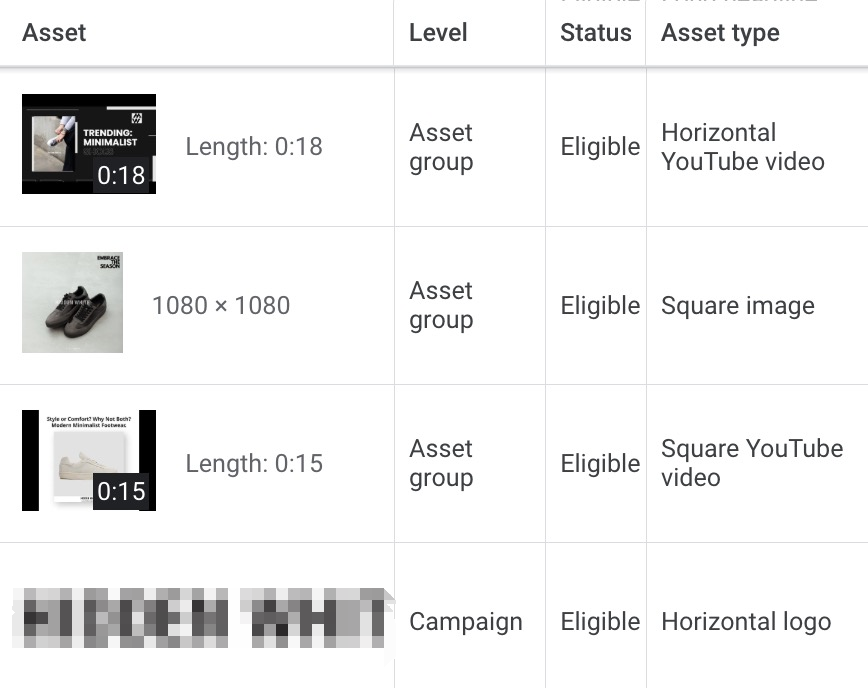
Messaging Tips
- Headlines: Write concise, benefit-driven headlines (30 characters or less) that highlight your unique value proposition.
- Descriptions: Use clear calls-to-action and address customer needs or pain points.
- Consistency: Ensure all assets reflect your brand voice and visual identity for a cohesive experience.
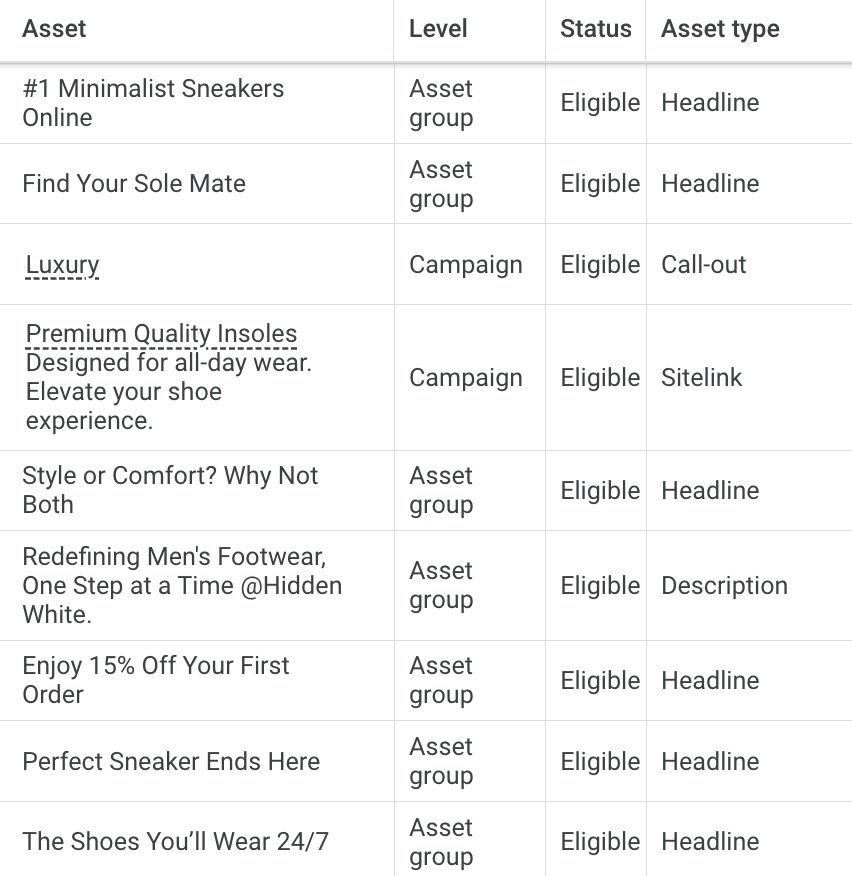
Visual Guide & Checklist
Asset Creation Checklist:
- At least 5 unique headlines and 5 descriptions
- Multiple high-quality images in all recommended formats
- At least one video in each aspect ratio
- Square and landscape logos
- Clear, consistent branding and messaging
Real-World Examples
Before: A single image and generic headline (“Shop Now!”) used across all placements. Result: Low engagement and limited reach.
After: Multiple images showcasing products in context, a short video highlighting benefits, and tailored headlines (“Upgrade Your Workspace Today,” “Free Shipping on All Orders”). Result: Higher click-through rates and improved conversions.
Integration with Other Google Tools: GA4, Merchant Center, and Offline Conversions
Maximising Performance Max with Google’s Ecosystem
Integrating Performance Max with Google Analytics 4 (GA4), Merchant Center, and offline conversion tracking unlocks deeper insights and more powerful optimisation. Here’s how to connect these tools for seamless data flow and campaign success.
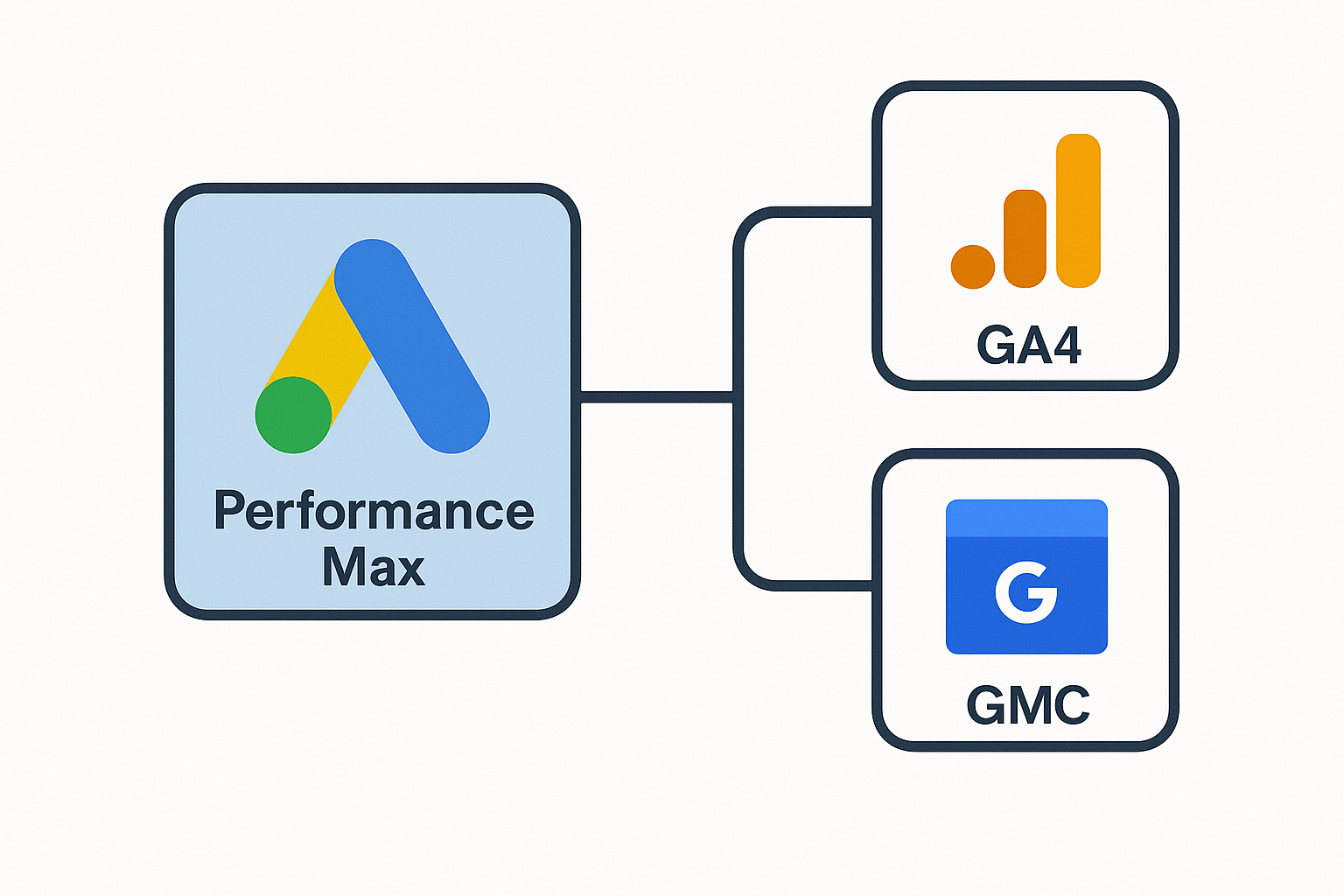
Step-by-Step Integration Guide
- Google Analytics 4 (GA4) Integration
- Link GA4 to Google Ads:
- In GA4, go to Admin > Product Links > Google Ads Links.
- Click “Link,” select your Google Ads account, and follow the prompts.
- Enable data sharing and auto-tagging for accurate conversion tracking
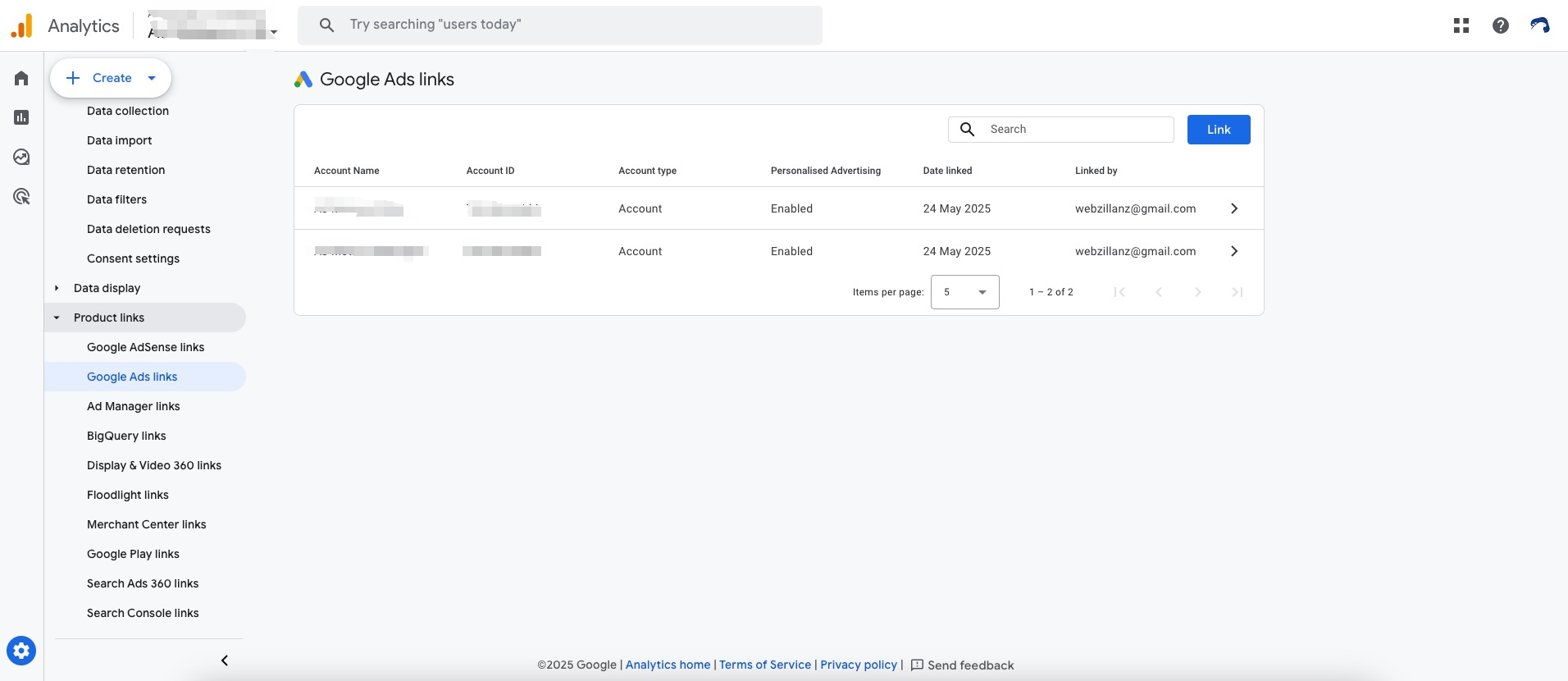
- Import Conversions:
- In Google Ads, navigate to Goals > Conversions.
- Click “Create Conversion Action” > “Import” > “Google Analytics (GA4).”
- Select relevant events (e.g., purchases, sign-ups) and complete the setup.
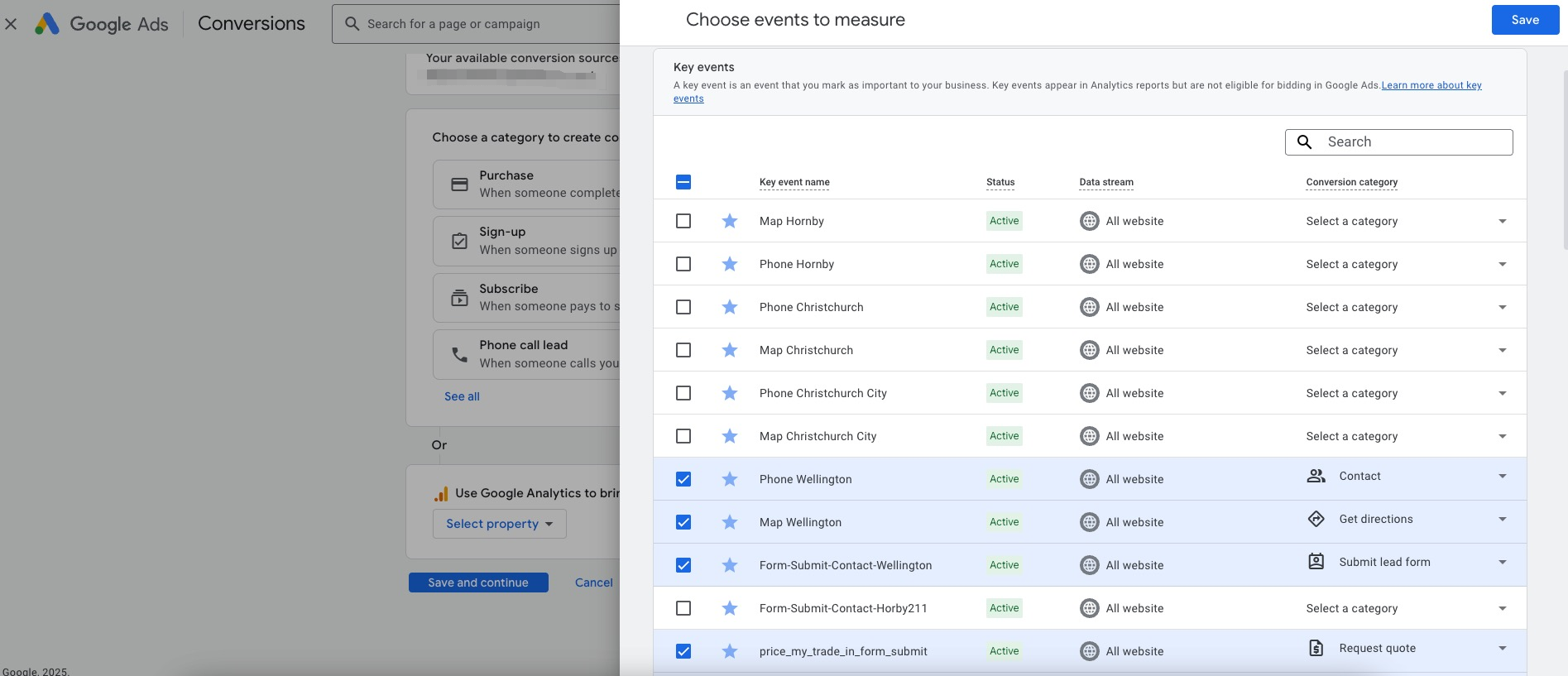
Troubleshooting Tip: If conversions aren’t importing, check that both accounts use the same email and that auto-tagging is enabled in Google Ads.
2. Google Merchant Center Integration
- Connect Merchant Center to Google Ads:
- In Merchant Center, go to Settings > Apps and services.
- Click “Add service” and select Google Ads
- Approve the link request in your Google Ads account.
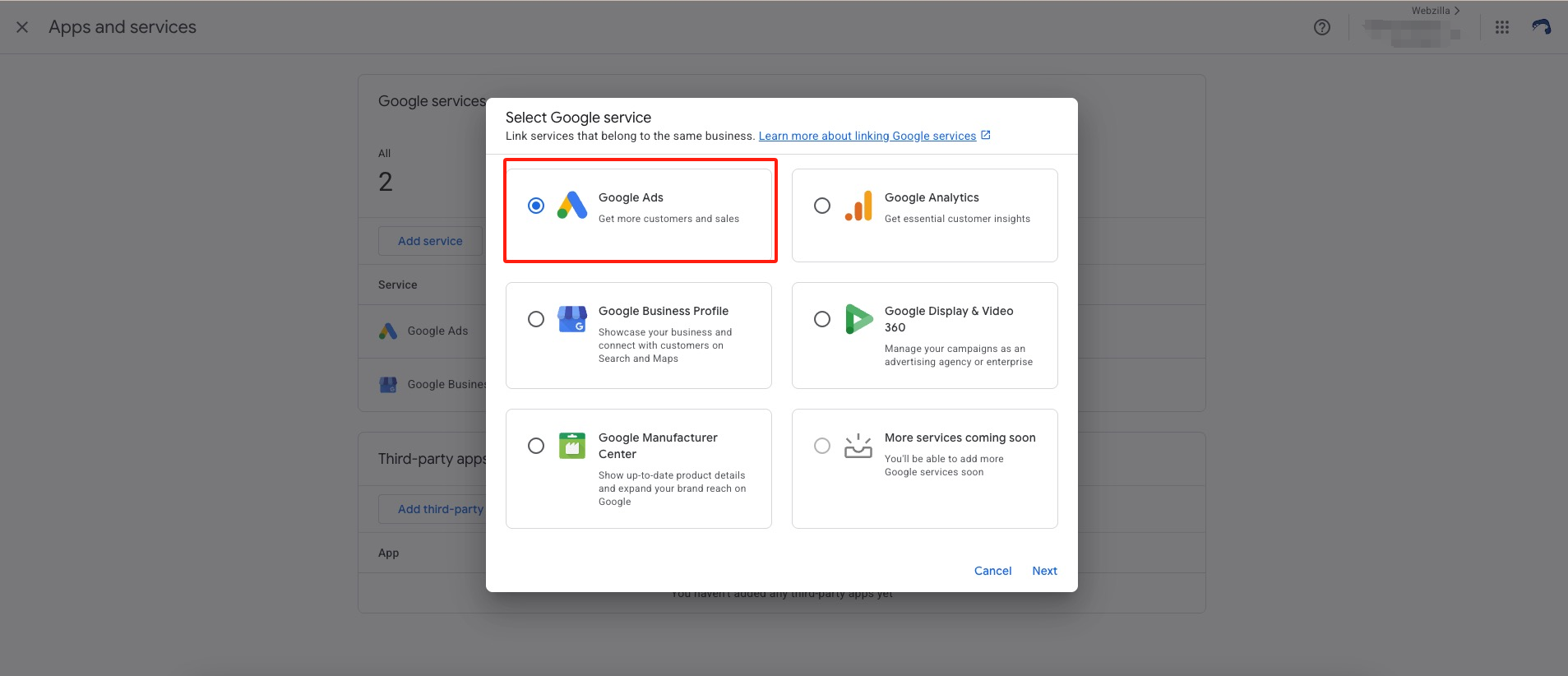
- Feed Management:
- Ensure your product feed is up to date, with accurate titles, descriptions, and images.
- Use feed rules to optimise product data for Performance Max campaigns.
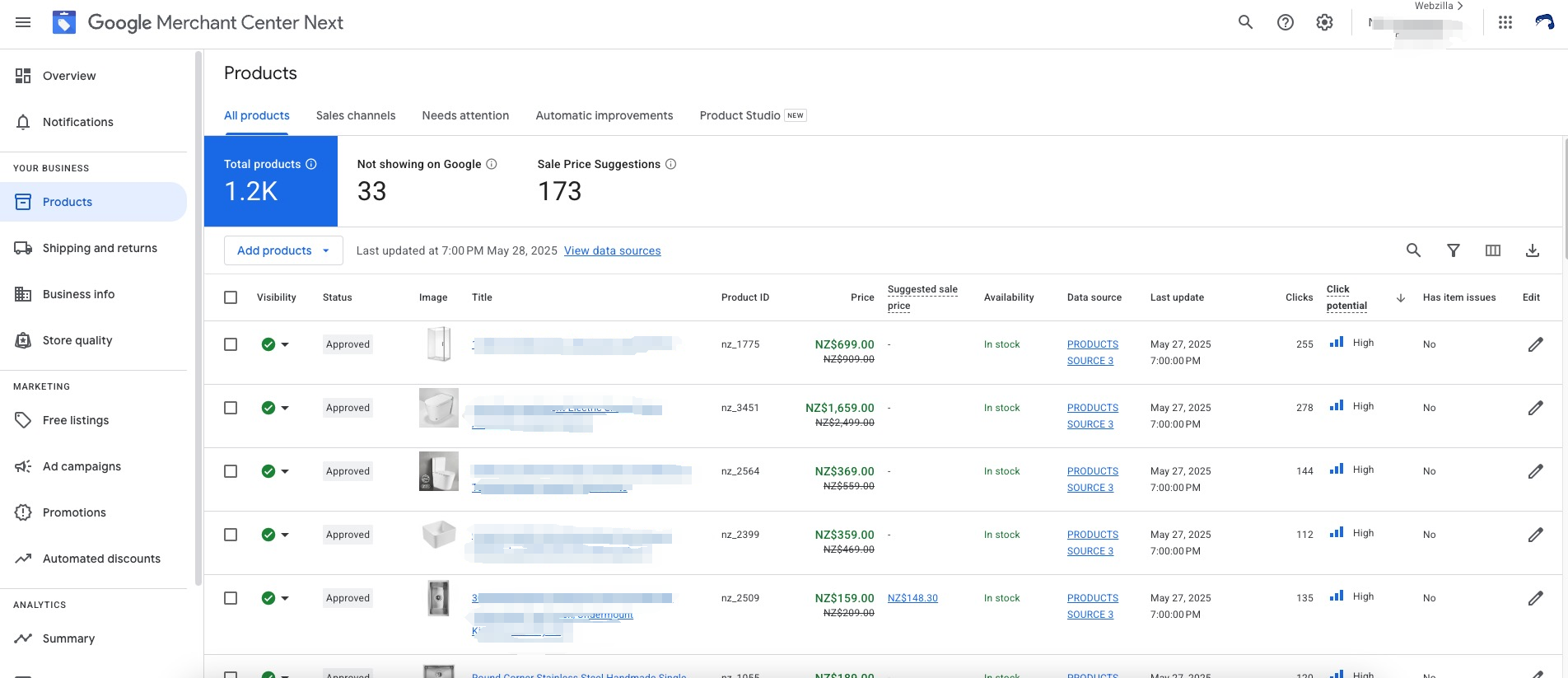
Troubleshooting Tip: If products aren’t showing, check feed diagnostics in Merchant Center for errors or disapprovals.
3. Offline Conversion Imports
- Set Up Offline Conversion Tracking:
- In Google Ads, go to Goals > Conversions.
- Click “Create Conversion Action” > “Conversions offline.”
- Follow the instructions to upload offline conversions using GCLID or Enhanced Conversions for Leads.
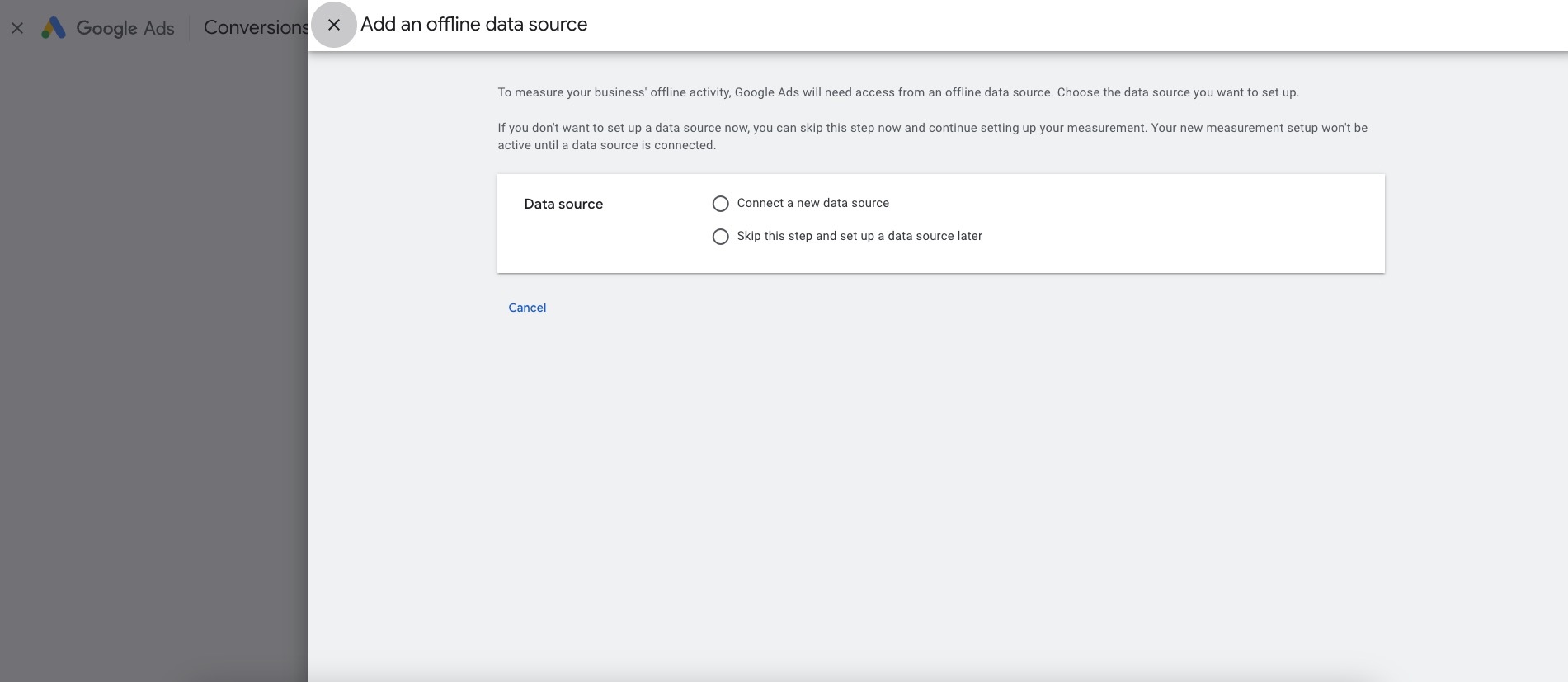
- Best Practices:
- Upload conversions regularly (daily or weekly) for timely optimisation.
- Map offline actions (e.g., phone sales, in-store purchases) to the correct campaigns.
Troubleshooting Tip: Ensure GCLID tracking is enabled on your website and that data is uploaded within 90 days of the click.
Why Integration Matters
- Unified Reporting: See the full customer journey, from ad click to conversion, across online and offline touchpoints.
- Smarter Optimisation: Performance Max uses imported data to refine targeting and bidding, driving better results.
- Enhanced Attribution: Understand which channels and assets contribute most to your goals.
Balancing Automation with Strategy
Some marketers initially worry about “losing control” when switching to Performance Max. There’s definitely a philosophical difference compared to the old days of hand-tuned campaigns.
The role of the digital marketer is shifting. It’s now less about adjusting hundreds of tiny settings, and more about setting the right goals, supplying great assets, identifying valuable audiences, and interpreting insights to feed back into your business.
Performance Max aims to take over the heavy lifting but relies on quality inputs. Providing excellent creative, robust conversion tracking, and clear business goals still requires plenty of expertise and input from your team.
Key Performance Max Features in 2025
So, what’s new in Performance Max this year? Google continues to invest heavily in this campaign type, and several updated features have caught the attention of advertisers:
- Asset Group Insights: Detailed breakdowns of how each creative asset, headline, and call-to-action is performing, across devices and placements.
- Improved Local Integration: Enhanced support for location-based campaigns, driving in-store visits and phone calls, not just e-commerce sales.
- Negative Keyword Management: More granular controls to block unwanted searches and irrelevant themes.
- Conversion Path Analysis: Clearer reports to help marketers see the journey users take from first click to final action, across channels.
- Privacy-First Targeting: Sophisticated, privacy-respecting modelling to maintain ad effectiveness even as cookie-based tracking declines.
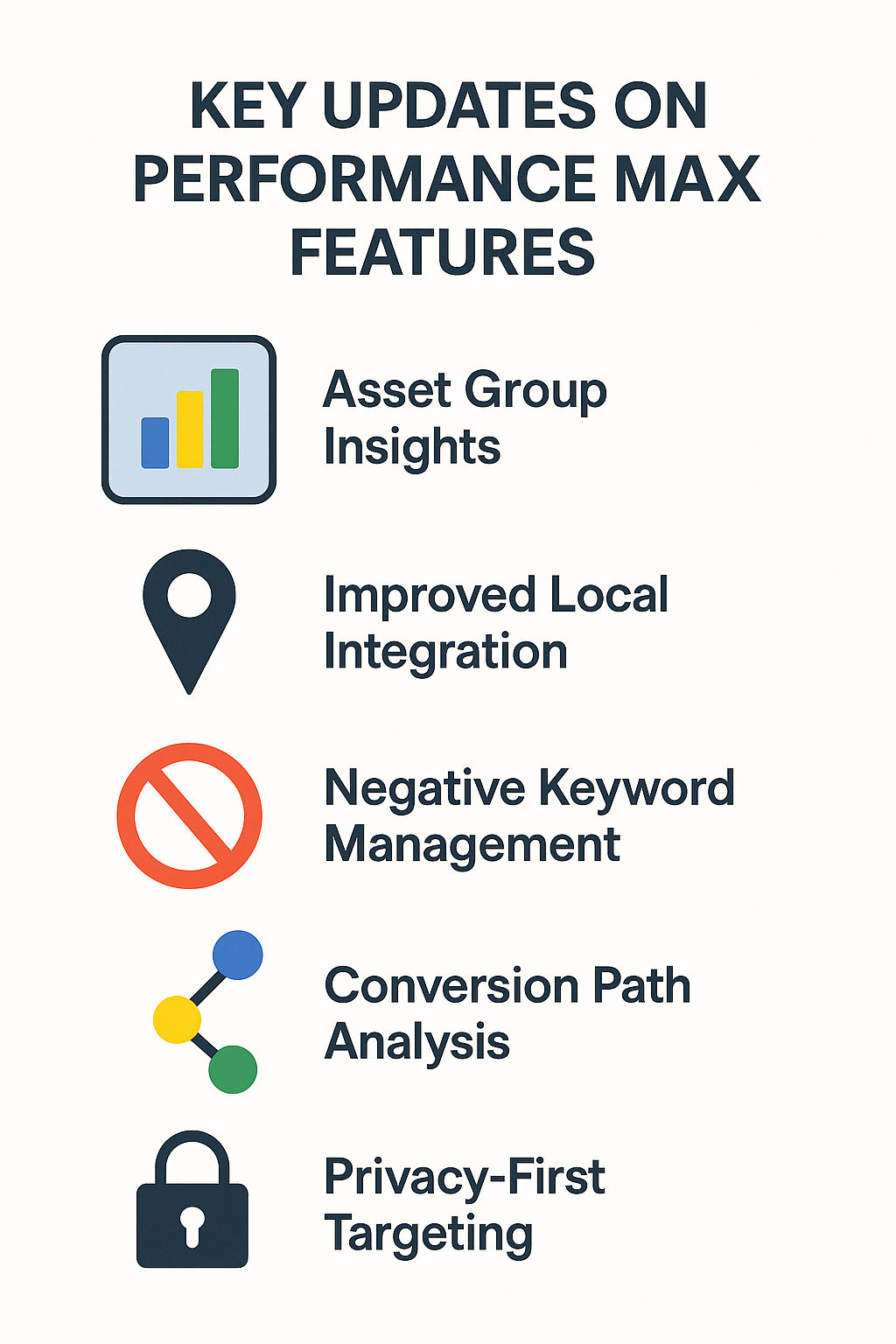
Future Trends & Roadmap for Performance Max
The Next Evolution of Automated Advertising
As we look ahead, Performance Max is poised to remain at the forefront of Google’s advertising innovation. The pace of AI advancement and automation is accelerating, and marketers should be prepared for a landscape that’s smarter, more integrated, and increasingly privacy-centric.
Predictions for Upcoming Features
- Deeper Personalisation: Expect even more granular audience targeting, with AI dynamically tailoring creative and messaging to individual users in real time.
- Expanded Asset Support: Google is likely to introduce new creative formats—such as interactive ads, augmented reality experiences, and richer shoppable content—to keep pace with evolving consumer behaviours.
- Unified Cross-Channel Insights: Reporting will become more holistic, with advanced attribution models that connect touchpoints across Google’s entire ecosystem and beyond.
- Automated Creative Generation: AI-driven tools will help marketers generate headlines, images, and videos on the fly, optimising for performance and brand consistency.
The Evolving Role of Automation
Automation will continue to take on more of the tactical workload, freeing marketers to focus on strategy, storytelling, and customer experience. The most successful teams will be those who embrace data-driven experimentation, rapid creative iteration, and ongoing learning.
Privacy-First Innovation
With increasing regulations and user expectations around privacy, Google will invest heavily in privacy-safe targeting and measurement. Expect advancements in AI modelling that deliver results without relying on third-party cookies or invasive tracking.
Staying Ahead
To remain competitive, marketers should:
- Stay informed about new Performance Max features and best practices.
- Regularly test emerging creative formats and audience strategies.
- Invest in first-party data collection and robust measurement frameworks.
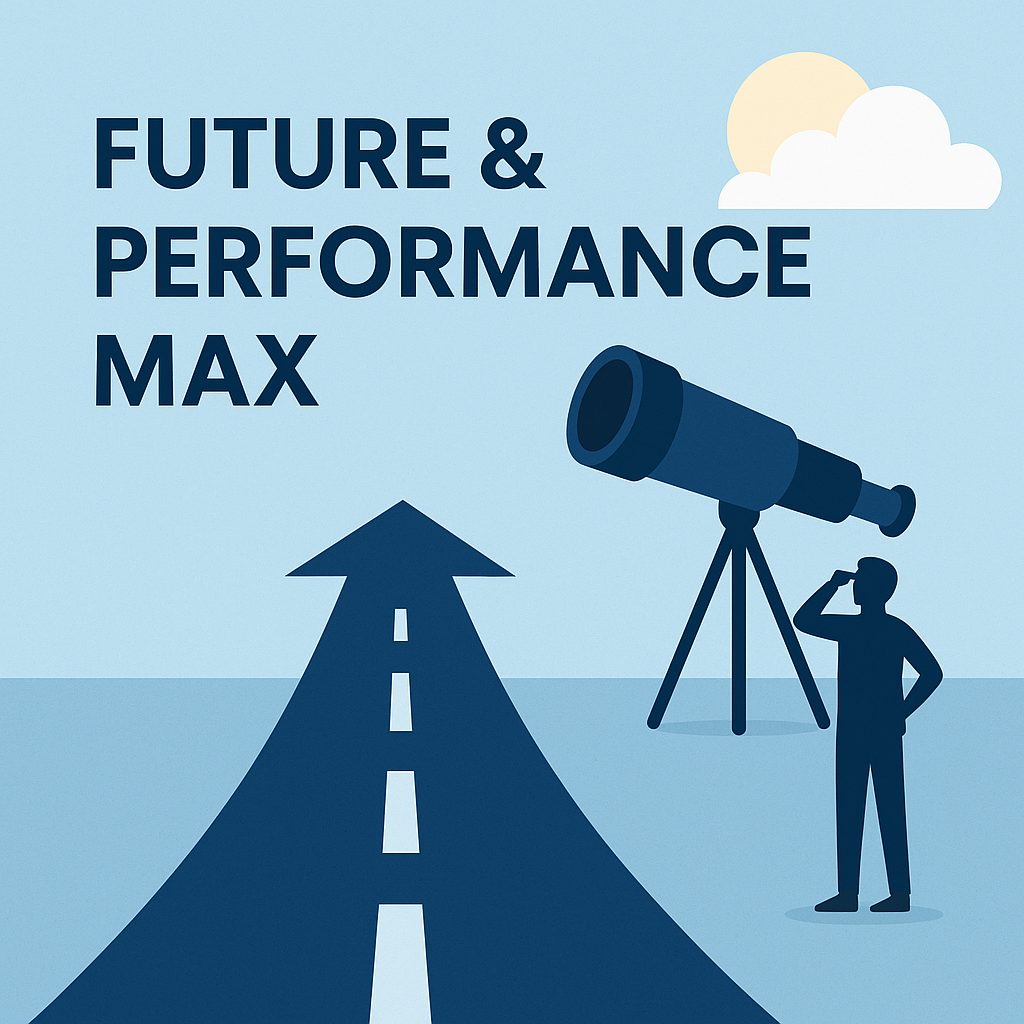
Deciding if Performance Max is Right for You
While Google is strongly encouraging most advertisers to adopt Performance Max, that doesn’t mean it’s the answer for everything or everyone, especially if you’re working with a sem marketing agency to implement more traditional strategies.
Performance Max campaigns are ideal if:
- You want consolidated reporting and simplified management.
- Your business objectives are well-defined (sales, leads, store visits).
- You have a mix of creative assets, including video and imagery.
- You’re open to trusting Google’s AI with more of your spend.
You may want to proceed cautiously if you:
- Need extreme control over placements (say, brand safety is a huge concern).
- Prefer channel-specific messaging that’s tightly tailored for each format.
- Don’t have strong conversion tracking and data privacy measures in place.
The Changing Role of the Marketer
Far from making marketers redundant, tools like Performance Max mean digital professionals can focus on bigger-picture strategic thinking, rapid creative iteration, and accurate measurement. The skills most in-demand are shifting from manual bid setting to understanding data, customer psychology, creative execution, and business analysis.
Gestures to a future where automation works quietly in the background, while marketers focus on brand, storytelling, and customer experience. The combination is powerful when harnessed well.
Troubleshooting and Optimising
For all its strengths, Performance Max isn’t always “set and forget.” Reviewing campaign insights at least weekly, and refreshing creative assets regularly, are essential. Marketers who treat it as a black box often see diminishing returns.
A few top tips for getting the most from your campaigns:
- Feed it plenty of high-quality data: upload all available assets and customer lists.
- Regularly review insight reports: see what’s working and where to improve.
- Use negative keywords and location exclusions for tighter control.
- Refresh creative assets monthly to avoid fatigue.
- Sync with your offline conversion data for more accurate reporting.
Staying close to your campaign data, while letting automation handle the scaling, keeps you in the driver’s seat.
example of a building negative keyword list: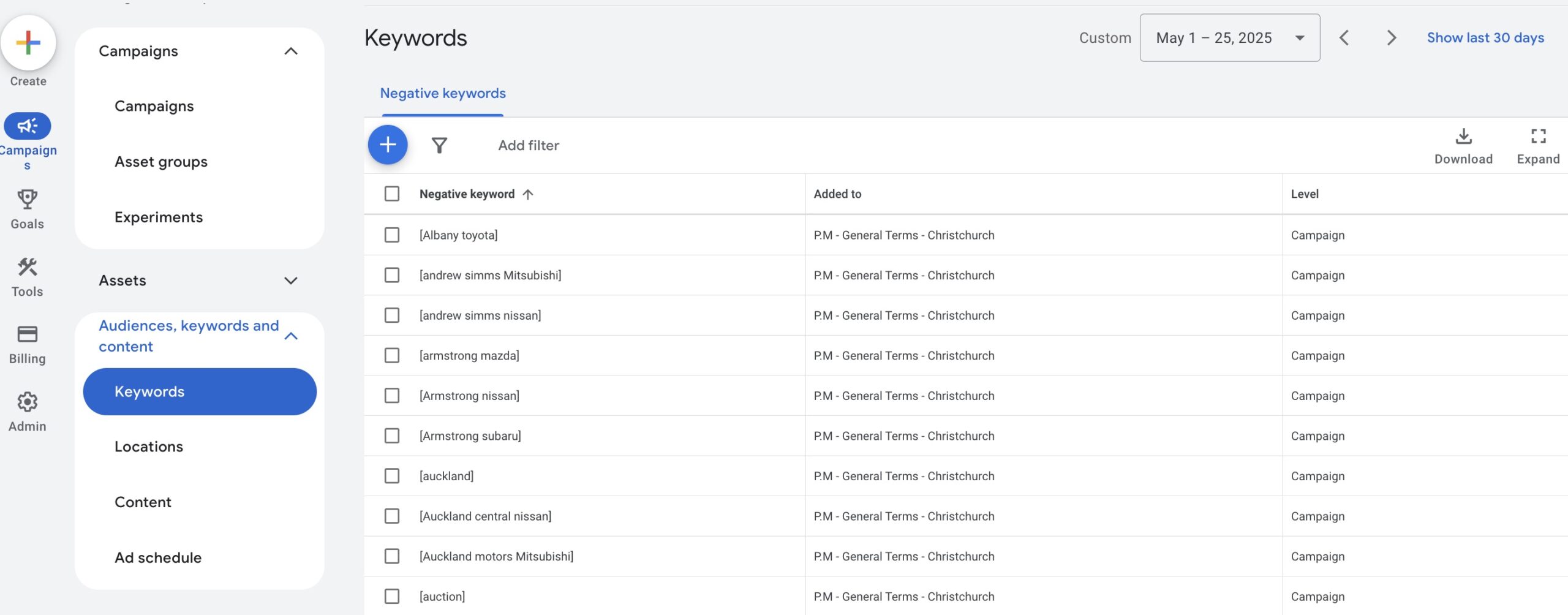
Table: When to consider Performance Max vs. Channel-Specific Campaigns
| Scenario | Performance Max | Channel-Specific |
|---|---|---|
| Goal: Unified reporting | ✔ | |
| Diverse creative assets | ✔ | |
| Brand safety paramount | ✔ | |
| Message tailored to each channel | ✔ | |
| Limited creative resources | ✔ | |
| Prioritising speed & simplicity | ✔ |
As 2025 rolls on, Performance Max continues to change the way digital campaigns are set up, managed, and optimised. Keeping a close eye on new features, and sparing time for testing, will mean you don’t get left behind as automated campaigns become the standard rather than the exception. For those ready to embrace data-driven, creative digital marketing, it’s a tool that promises measurable, scalable results.

